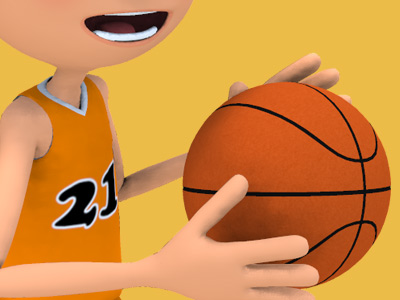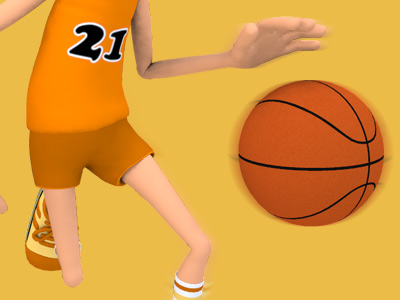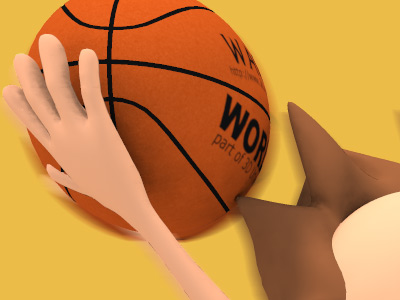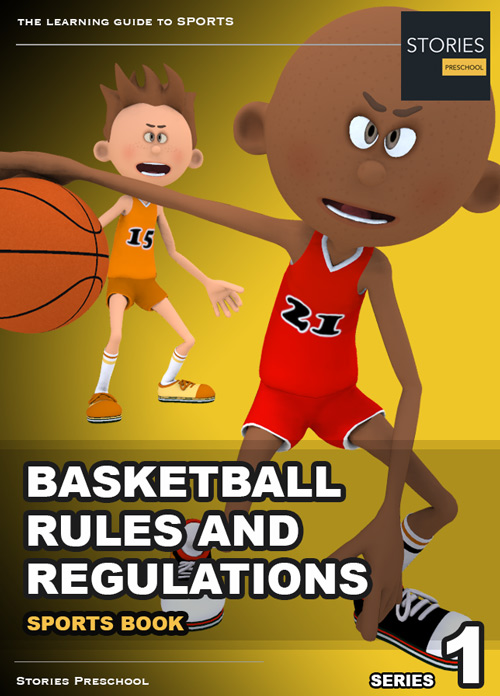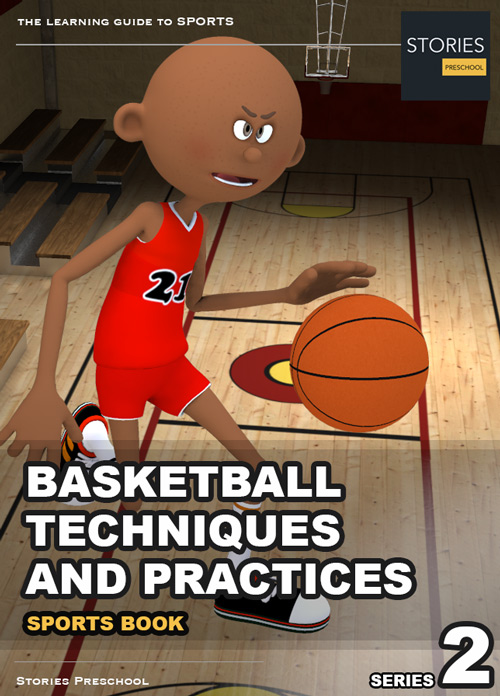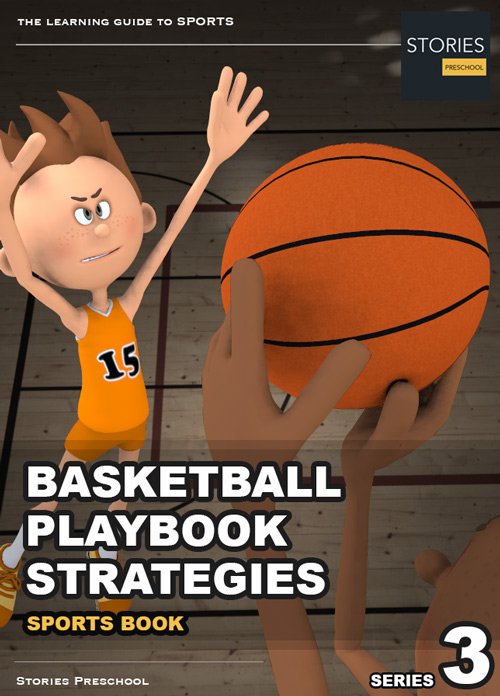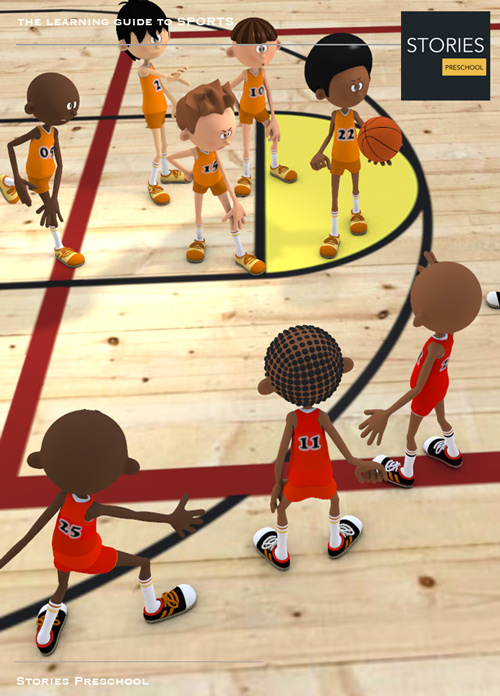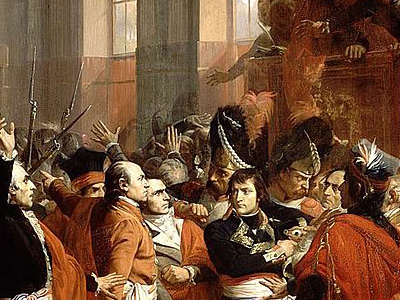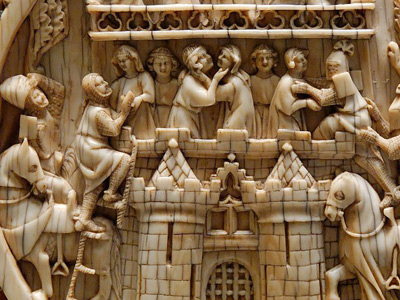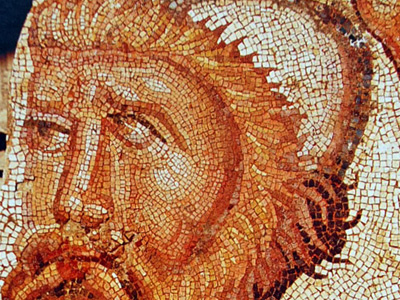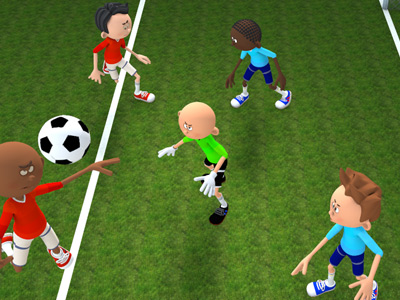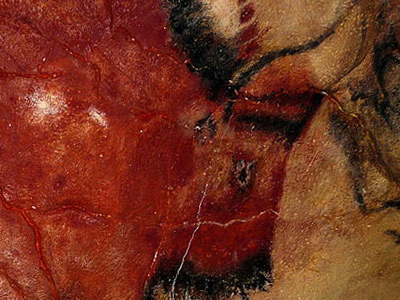Basketball
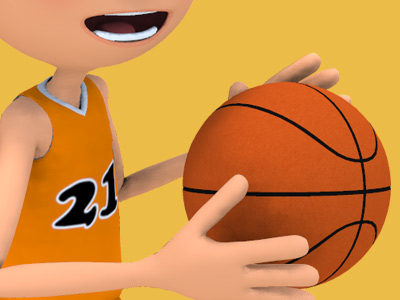
Dribbling
Dribbling is the act of bouncing the ball continuously with one hand, and is a requirement for a player to take steps with the ball. To dribble, a player pushes the ball down towards the ground with the fingertips rather than patting it; this ensures greater control.
When dribbling past an opponent, the dribbler should dribble with the hand farthest from the opponent, making it more difficult for the defensive player to get to the ball. It is therefore important for a player to be able to dribble competently with both hands.
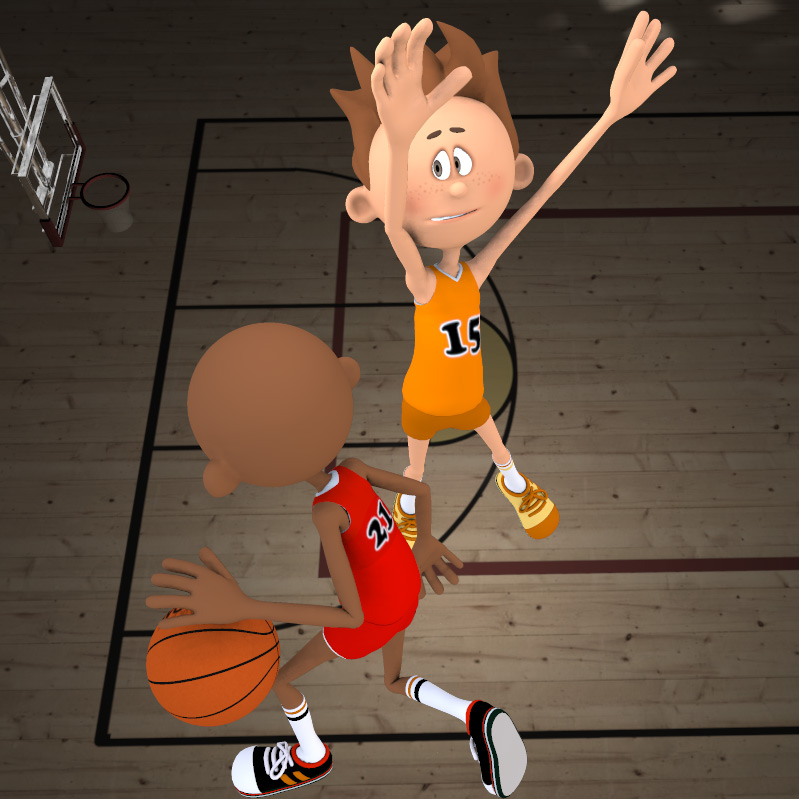
Good dribblers (or "ball handlers") tend to bounce the ball low to the ground, reducing the distance of travel of the ball from the floor to the hand, making it more difficult for the defender to "steal" the ball. Good ball handlers frequently dribble behind their backs, between their legs, and switch directions suddenly, making a less predictable dribbling pattern that is more difficult to defend against. This is called a crossover, which is the most effective way to move past defenders while dribbling.
A skilled player can dribble without watching the ball, using the dribbling motion or peripheral vision to keep track of the ball's location. By not having to focus on the ball, a player can look for teammates or scoring opportunities, as well as avoid the danger of having someone steal the ball away from him/her.
Dribbling Moves
Crossover Dribble
In a crossover dribble, the ball handler changes the ball from one hand to the other using a single dribble. The crossover is a fundamental dribbling technique in basketball used to keep the ball in the hand furthest from the defender (preventing a steal) while maintaining a desired speed and orientation on the court. It is very efficient when executing a drive. Make the crossover, get around your defender, and drive to the basket. A crossover functions best when the ball handler looks and acts like they are headed in one direction, before crossing over to the other direction. This can often be achieved by a simple head fake, or a step in that intended direction.

In and out Dribble
An in and out dribble is widely used as a counter move to a crossover, whereby the ball handler fakes the crossover, and pushes the ball back out on the same hand.

Hesitation Dribble
In a hesitation dribble, the ball handler pauses before making their next move, often a prelude to another dribbling move. This essentially freezes the defender and keeps them guessing, with regard to your next move.

Between the Legs
This is a commonly used variation of the crossover in which the ball-handler bounces the ball off of the floor between his legs and catches it with the other hand on the opposite side of his body. It is used as a safer way to cross over while directly facing a defender, but requires more slowing of forward momentum than the crossover dribble.

Behind the Back
This advanced dribbling technique involves dribbling the ball behind the back either once (as a form of crossover) or continuously. Dribbling once or a few times in this way can be effective in a given situation, but doing so for prolonged periods of time brings dangers of losing the ball or a turnover. The advantage of this move is a decreased chance of a steal, as the ball handler can change direction without bringing the ball in front of the defender.

Wraparound
The wraparound is similar to a behind-the-back except; instead of the ball being thrown in a sideways direction and bouncing behind the ballhandler's back, it is swung further around the back and thrown in a forward direction, bouncing on the side or in front of the ballhandler's body. This move is mostly used when a defender lunges toward one side of the ballhandler's body for a steal. The ballhandler would then simply throw the ball around his body and quickly pass his defender.
Different Heights Dribble
This technique involves dribbling the ball in different heights. This is usually combined with other dribbling techniques to make it more effective. It is mostly effective on players smaller or taller than you but NOT quite on players that has the same height as you. The fundamentals are if you have a smaller opponent, you can lure them by pretending to bring the ball low and then suddenly turning the ball very high. If the opponent is taller, you can lure them by pretending to bring the ball high and suddenly changing its height very low. This dribbling technique can be used if you want to drive past your opponents. If your opponent does not bite on your lure/trap, maintain the height of your dribble, and you can drive through them but with more speed. Note, if you're going to pass or shoot after your dribble, make sure that you will go back to your usual pace to maintain the momentum for your dribbling.

Ankle Break Dribble
A high-level speed dribble that disrupts his opponent's balance and makes them stumble to the ground. This situation occurs when the opponent's center of gravity is on their pivot leg while they're turning. Players' collapsing due to this rarely occurs under normal circumstances.

After the dribble
Euro step
The Euro step (sometimes "Eurostep") is a move developed in European basketball in which a player, after picking up his dribble, takes a step in one direction, and then quickly takes a second step in the other direction before they attempt a layup. It is an attempt to evade at least one defender before attacking the basket.
Šarūnas Marčiulionis, a Lithuanian, is generally credited with bringing the move to the NBA. It was popularized in North America by Manu Ginóbili, an Argentine who arrived in the NBA from the Italian league, and has since been used by many US-born players, such as Dwyane Wade, and James Harden.
Pro Hop
The combination of a euro step and a jump-stop, the pro-hop is a move in which a player picks up their dribble with a synchronized right hand dribble/right foot step, or... a synchronized left hand dribble with left foot step. The player then rips the ball to the opposite side of their body while landing on a jump-stop. The pro hop's ability to split defenders, or throw an opposing defender off rhythm through 'change of direction speed' is a move popularized by Shantay Legans, former point guard for University of California at Berkeley.
Pro-hop Euro step
It is a pro-hop, without landing on a jump stop. Player picks up their dribble with a synchronized right hand dribble/right foot step, or a left hand dribble with left foot step. Player then rips the ball to opposite side of their body (behind the back if skilled), takes two steps, and finishes with a reverse layup.
Power up
The power up is a move in which the player lands on their outside foot then inside foot, and powers up toward the basket. An effective move because of its balance and power resulting from a two-foot gather and take off.
SPORTS
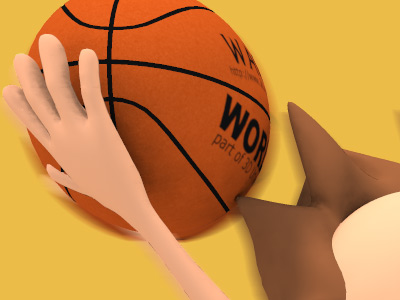
RESOURCES
This article uses material from the Wikipedia articles "Basketball" and "Basketball moves", which is released under the Creative Commons Attribution-Share-Alike License 3.0.
© Stories Preschool. All Rights Reserved.
